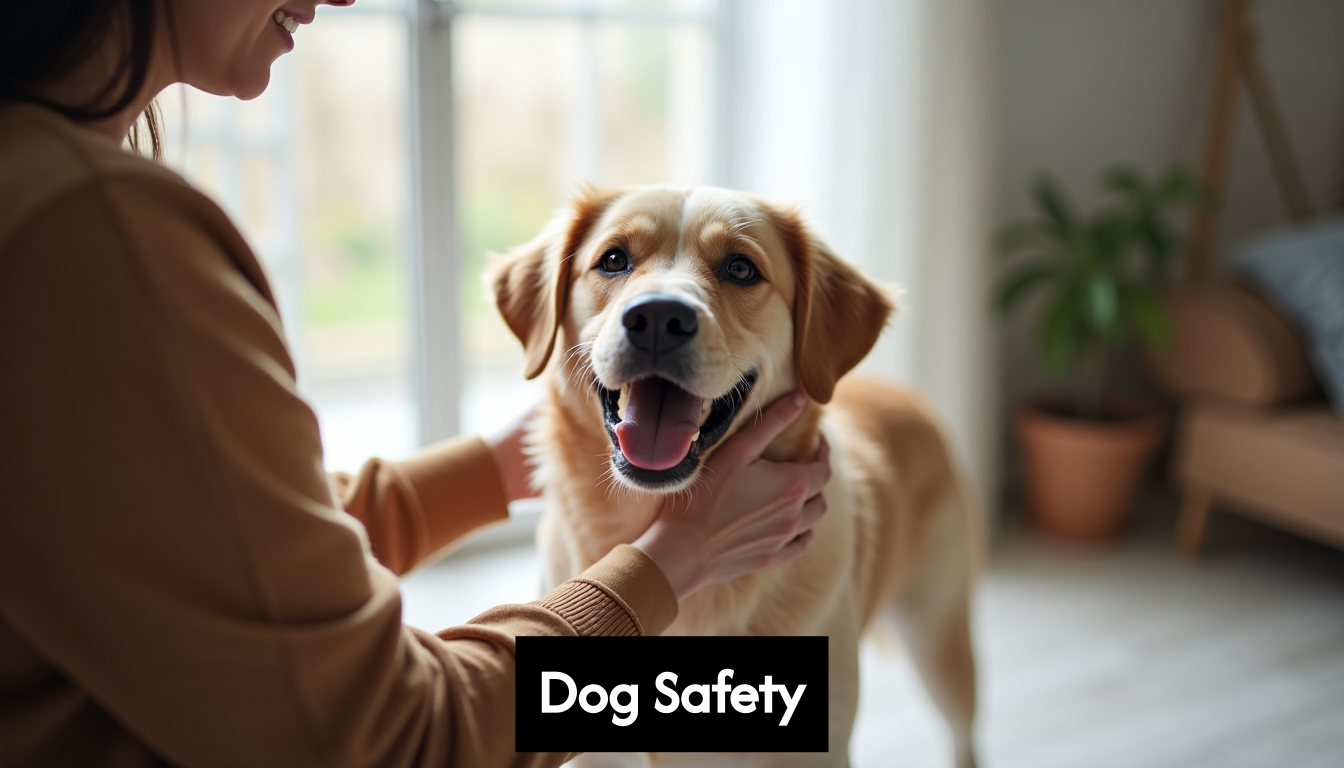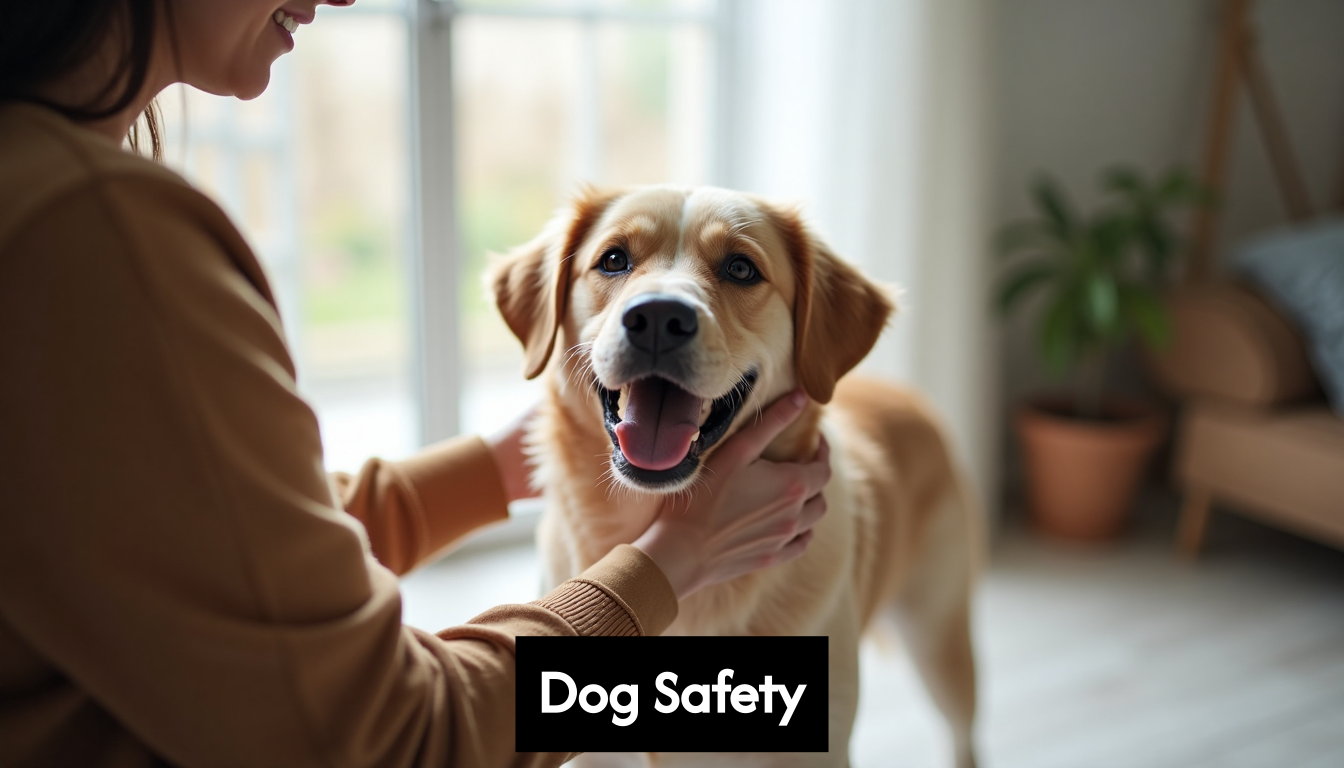
Dog safety at home and outdoors is crucial for every pet owner. With over 60 percent of households in the U.S. owning a dog, it’s a common concern. But here’s a surprise. Many owners underestimate the simple changes that can revolutionize their dog’s safety. The twist? Implementing just a few basic strategies can dramatically reduce risks and give you peace of mind.
Table of Contents
- Create A Safe Environment For Your Dog
- Practice Safe Interactions With Other Dogs
- Train Your Dog For Safety And Security
- Be Prepared For Safety Emergencies
Quick Summary
| Takeaway | Explanation |
|---|---|
| Create a Safe Environment | Eliminate household chemical risks by using pet-safe products, securing chemicals, and creating physical barriers to prevent injuries in and around the home. |
| Promote Safe Interactions | Understand canine body language and use controlled socialization techniques to ensure positive dog interactions, reducing the risk of aggression. |
| Train for Safety | Implement foundational obedience training and positive reinforcement techniques to establish safety protocols and enhance communication between you and your dog. |
| Prepare for Emergencies | Assemble a comprehensive emergency kit for your dog, develop response plans for various scenarios, and utilize advanced identification methods like microchipping and GPS tracking. |
Create a Safe Environment for Your Dog
Creating a safe home environment is fundamental to how to improve dog safety. Dogs are vulnerable to numerous environmental hazards that can compromise their health and well being. Understanding and mitigating these risks requires a comprehensive approach that addresses potential dangers in both indoor and outdoor spaces.
Eliminate Household Chemical Risks
Domestic environments often contain hidden threats that many dog owners overlook. According to Environmental Health Perspectives, pets are significantly more susceptible to chemical exposures due to their lower body mass and different metabolic processes. Common household items like cleaning products, pesticides, and treated furniture can introduce serious health risks.
To minimize these dangers, dog owners should:
- Replace conventional cleaning products with pet safe alternatives
- Store chemicals in secured cabinets inaccessible to dogs
- Choose natural pest control methods that do not rely on toxic compounds
- Use pet friendly furniture treatments and fabrics
Manage Indoor and Outdoor Spaces
Smart environmental management goes beyond chemical safety. The American Veterinary Medical Association recommends creating physical barriers and controlled spaces that prevent accidental injuries. This involves identifying and removing potential hazards like loose electrical cords, small objects that could be swallowed, and unstable furniture that might topple.
Outdoor spaces require equally careful consideration. Secure fencing, supervised outdoor time, and regular yard maintenance can dramatically reduce risks. Removing toxic plants, ensuring no standing water exists, and creating designated safe zones for your dog are critical steps in improving overall dog safety.
Advanced Environmental Monitoring
Emerging technologies are transforming how owners monitor pet environments. Pet Technology Research Institute highlights the growing use of sensor enabled collars and smart home devices that can track environmental conditions and potential hazards in real time. These technologies provide unprecedented insights into a dog’s immediate surroundings, allowing for rapid intervention if unusual conditions are detected.
These advanced monitoring systems can alert owners to temperature extremes, potential toxic exposures, and unexpected environmental changes that might compromise a dog’s safety. By integrating technology with traditional safety practices, dog owners can create multilayered protection strategies.
Implementing comprehensive safety measures requires consistent attention and proactive planning. Every environment presents unique challenges, and dog owners must remain vigilant and adaptable. Regular veterinary consultations, ongoing education about potential risks, and a commitment to creating a protective living space are essential components of responsible pet ownership.
Remember that improving dog safety is an ongoing process. What works in one household might need modification in another. Stay informed, remain observant, and prioritize your dog’s environmental well being.
Practice Safe Interactions With Other Dogs
Practicing safe interactions between dogs is a critical component of how to improve dog safety. Not all dog encounters are positive, and understanding the nuances of canine communication and behavior can prevent potential conflicts and ensure the well being of all dogs involved.
Understanding Canine Body Language
Reading and interpreting dog body language is fundamental to safe interactions. According to Dog Behavior Research Center, dogs communicate primarily through non verbal cues that signal their emotional state and intentions. Recognizing signs of stress, fear, or aggression can help prevent dangerous encounters.
Key indicators of potential dog interaction risks include:
- Stiff body posture
- Direct eye contact without blinking
- Raised hackles
- Tail held high and rigid
- Ears pinned back
- Low growling or showing teeth
Recognizing these signals allows owners to intervene before a situation escalates. Professional dog trainers recommend maintaining a calm demeanor and creating physical distance when these warning signs appear.
Controlled Socialization Techniques
Socialization is crucial for developing healthy dog interactions, but it must be carefully managed. American Kennel Club Behavioral Research emphasizes the importance of controlled environments for introducing dogs to each other. Structured socialization helps dogs learn appropriate social skills and reduces the likelihood of aggressive encounters.
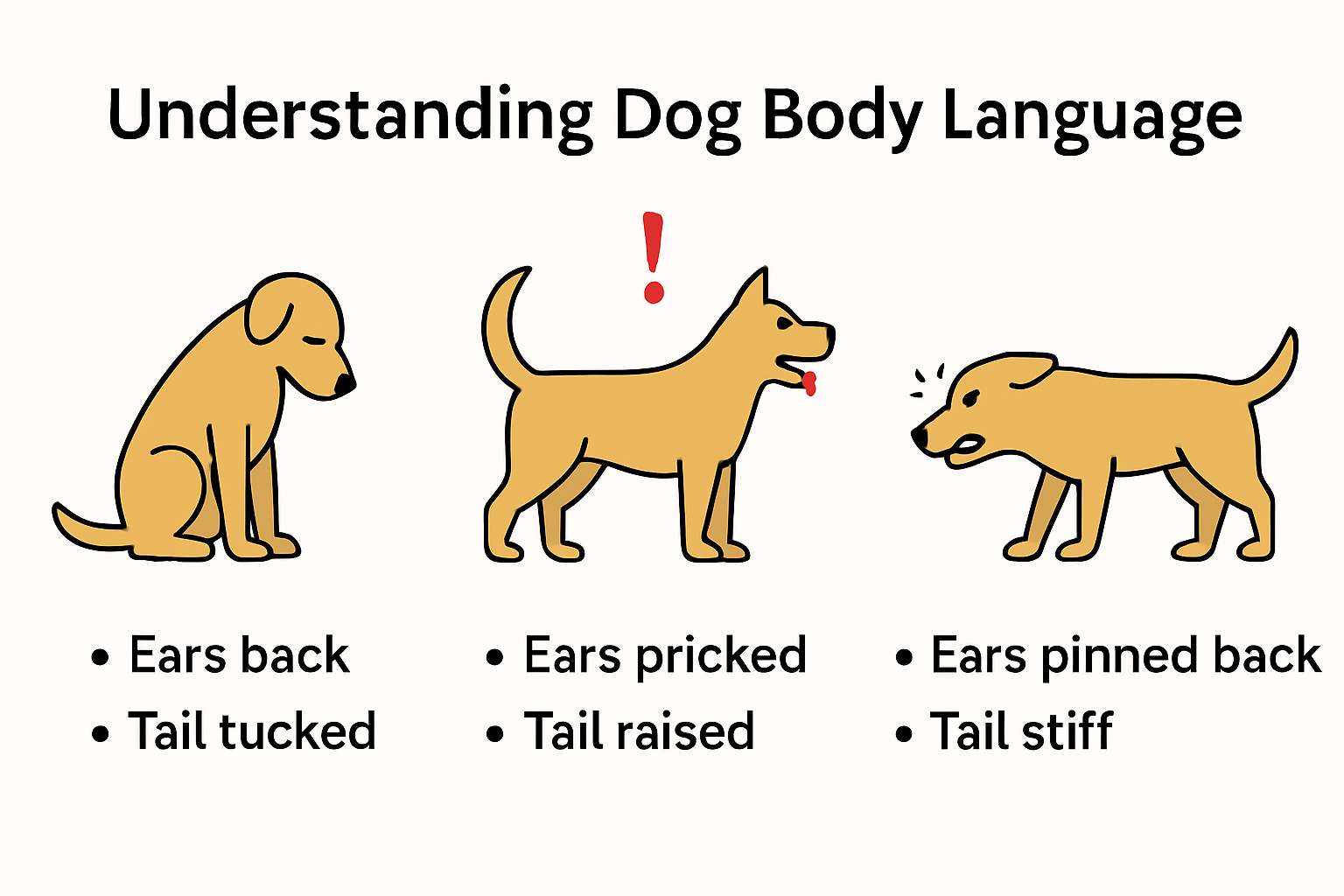 Effective socialization strategies include:
Effective socialization strategies include:
- Introducing dogs in neutral territories
- Using leashes for initial interactions
- Keeping initial meetings short and supervised
- Watching for positive body language
- Separating dogs at first sign of discomfort
Puppies have a critical socialization window between 3 and 14 weeks where positive experiences can shape lifelong behavior. Professional trainers and controlled puppy classes can provide safe environments for these crucial interactions.
Managing High Risk Interaction Scenarios
Some environments present higher risks for dog interactions. Veterinary Behavioral Medicine Institute identifies specific scenarios that require extra caution: dog parks, crowded spaces, and areas with multiple unfamiliar dogs.
To improve safety in these environments:
- Always maintain visual contact with your dog
- Keep dogs on leash in unfamiliar or crowded areas
- Avoid dog parks during peak hours
- Carry deterrent spray for emergency situations
- Know your dog’s individual temperament and limits
Understanding that each dog is an individual with unique personality traits is key. Some dogs are naturally more social, while others may be more reactive or anxious. Respecting these individual differences and creating appropriate interaction boundaries is essential for safe dog socialization.
Improving dog safety during interactions requires continuous learning, observation, and adaptation. Regular training, professional guidance, and a commitment to understanding canine behavior can significantly reduce risks and create positive social experiences for dogs.
Train Your Dog for Safety and Security
Training is a fundamental aspect of how to improve dog safety, transforming basic obedience into a comprehensive strategy for protecting both the dog and its surrounding environment. Effective training goes beyond simple commands, creating a communication framework that enhances mutual understanding and reduces potential risks.
Foundational Obedience Training
The American Kennel Club emphasizes that foundational obedience training is critical for establishing safety protocols. Basic commands like sit, stay, come, and heel are not mere tricks but essential safety mechanisms that can prevent dangerous situations.
Key obedience skills that directly impact safety include:
- Immediate recall under different environmental conditions
- Reliable stop and stay commands
- Walking calmly on leash without pulling
- Controlled response to distractions
- Consistent attention to owner’s instructions
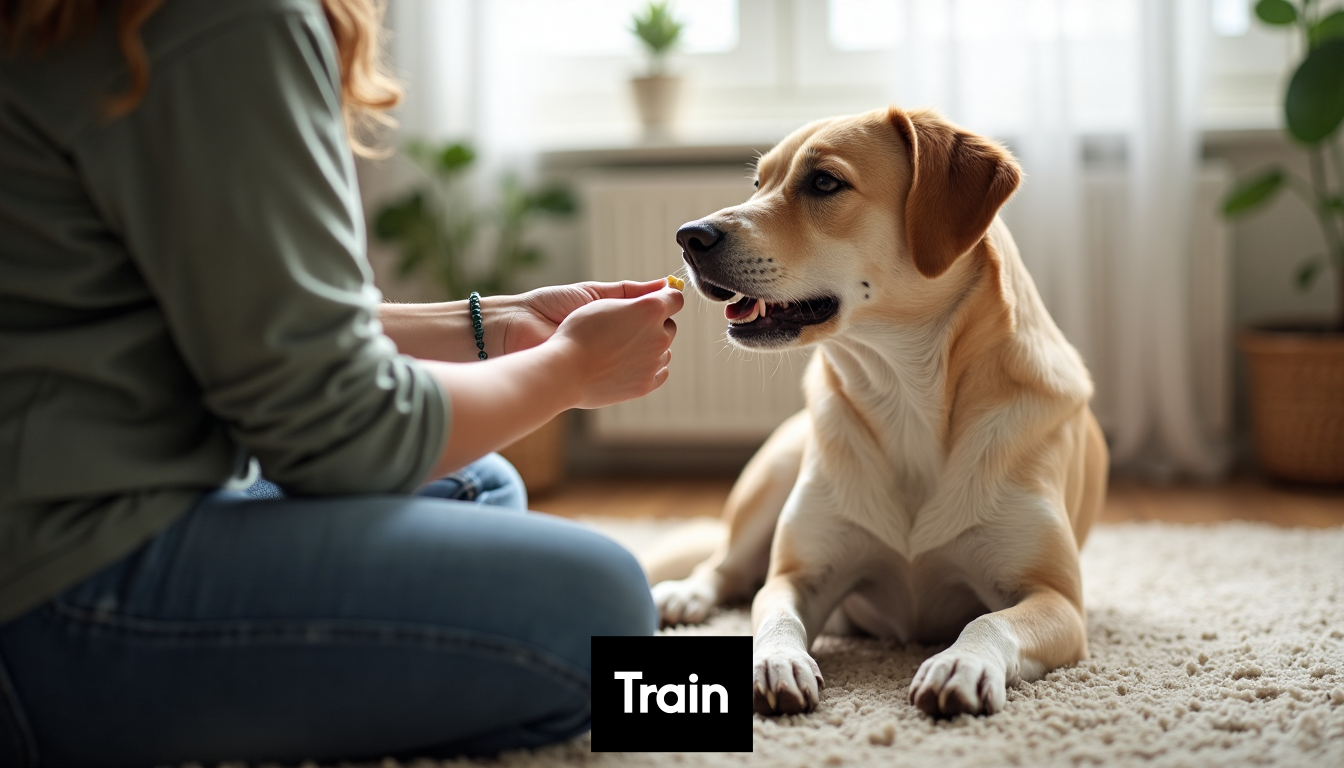
Consistent training requires patience and positive reinforcement. Professional trainers recommend short, frequent training sessions that keep dogs engaged and minimize frustration. The goal is creating a responsive dog that can be controlled quickly in potentially hazardous scenarios.
Positive Reinforcement Techniques
According to Animal Behavior Research Institute, positive reinforcement techniques are significantly more effective than punishment based methods for improving dog safety. Reward based training not only teaches desired behaviors but also builds trust and reduces anxiety that can lead to unpredictable reactions.
Effective positive reinforcement strategies include:
- Using high value treats as immediate rewards
- Providing verbal praise and physical affection
- Creating clear, consistent training routines
- Matching reward intensity to training difficulty
- Gradually increasing training complexity
By focusing on rewarding correct behaviors rather than punishing mistakes, owners can develop dogs that are more confident, responsive, and less likely to exhibit reactive or aggressive behaviors.
Advanced Safety Training Techniques
Canine Safety Training Association recommends advancing beyond basic obedience to include specialized safety training. This includes teaching dogs to recognize and respond to potential threats, managing their behavior in high stress environments, and developing reliable emergency protocols.
Advanced safety training components should address:
- Emergency recall in challenging environments
- Controlled responses to unexpected stimuli
- Proper socialization with various people and animals
- Stress management techniques
- Handling skills for veterinary and grooming situations
Professional dog trainers suggest that safety training is an ongoing process. Regular refresher courses, continuous learning, and adapting training to the dog’s evolving environment are crucial for maintaining high safety standards.
Ultimately, successful dog safety training requires commitment, consistency, and a deep understanding of canine psychology. By investing time in comprehensive training approaches, owners can create a safe, responsive, and confident companion that can navigate various environments with minimal risk.
Be Prepared for Safety Emergencies
Preparing for safety emergencies is a critical aspect of how to improve dog safety. Unexpected situations can arise quickly, and having a comprehensive emergency plan can mean the difference between life and death for your canine companion.
Create a Comprehensive Emergency Kit
The American Veterinary Medical Association recommends creating a dedicated emergency preparedness kit specifically for your dog. This kit should be easily accessible and include essential items that can support your dog’s immediate needs during various emergency scenarios.
Key components of a dog emergency kit include:
- Three day supply of fresh water and food
- Medications and medical records in waterproof container
- First aid supplies specific to dogs
- Collapsible food and water bowls
- Sturdy leash and backup collar with identification
- Blanket and comfort items
- Recent photographs of your dog for identification
- Portable crate or carrier
Rotate perishable items regularly and keep the kit in an easily accessible location. Professional emergency preparedness experts suggest creating multiple kits—one for home, one for your vehicle, and a portable version for quick evacuation.
Develop Comprehensive Emergency Response Plans
Veterinary Emergency Management emphasizes the importance of developing multiple emergency scenarios and corresponding response plans. Different emergencies require unique approaches, whether dealing with natural disasters, medical emergencies, or unexpected separation.
Critical emergency planning elements include:
- Identifying multiple veterinary emergency contacts
- Creating a network of potential dog caregivers
- Establishing evacuation routes and pet friendly shelters
- Developing communication protocols with family members
- Practicing emergency drills with your dog
- Maintaining current medical and vaccination records
Consider your specific geographic location and potential risks. Coastal regions might focus on hurricane preparedness, while areas prone to wildfires need specialized evacuation strategies.
Advanced Identification and Tracking Techniques
Canine Safety Research Institute highlights the critical importance of advanced identification methods. Traditional identification tags can be lost, making microchipping and digital tracking increasingly important for ensuring your dog’s safety during emergencies.
Recommended identification strategies include:
- Microchipping with updated contact information
- GPS enabled tracking collars
- Registering your dog with multiple identification databases
- Maintaining current photographs documenting unique markings
- Creating digital health and vaccination records
Modern technology offers unprecedented opportunities to enhance dog safety. Digital tracking systems can provide real time location information, while comprehensive medical records can be instantly accessed by veterinary professionals during emergencies.
Emergency preparedness is not a one time task but an ongoing commitment. Regular review and updating of your emergency plans, maintaining your emergency kit, and staying informed about potential risks are essential for ensuring your dog’s safety. By taking proactive steps and maintaining a comprehensive approach, you can significantly reduce risks and improve your ability to protect your canine companion during unexpected situations.
Frequently Asked Questions
How can I create a safe environment for my dog at home?
To create a safe environment for your dog at home, eliminate household chemical risks by using pet-safe cleaning products, securing chemicals, and creating physical barriers to prevent injuries. Regularly check for hazards like loose wires and small objects that could be swallowed.
What are effective ways to manage dog interactions?
To manage dog interactions safely, understand canine body language, which can help you recognize signs of stress or aggression. Use controlled socialization techniques, such as introducing dogs in neutral spaces and supervising initially, to promote positive encounters.
What basic training should I implement for my dog’s safety?
Implement foundational obedience training, including basic commands like sit, stay, and come. This training helps establish safety protocols and ensures your dog can respond quickly to commands in various situations, enhancing both safety and communication.
What should be included in a dog emergency preparedness kit?
A comprehensive dog emergency kit should include a three-day supply of food and water, medications and medical records, first aid supplies, a sturdy leash and collar, comfort items, and recent photographs of your dog for identification purposes.
Enhance Your Dog’s Safety with iPupPee!
Imagine a world where your furry companion can communicate with you effortlessly, enhancing their safety both at home and outdoors. Just as the article emphasizes the importance of creating a secure environment and understanding canine interactions, our innovative device, the iPupPee, takes canine communication to a whole new level, ensuring that you stay connected to your pet at all times.
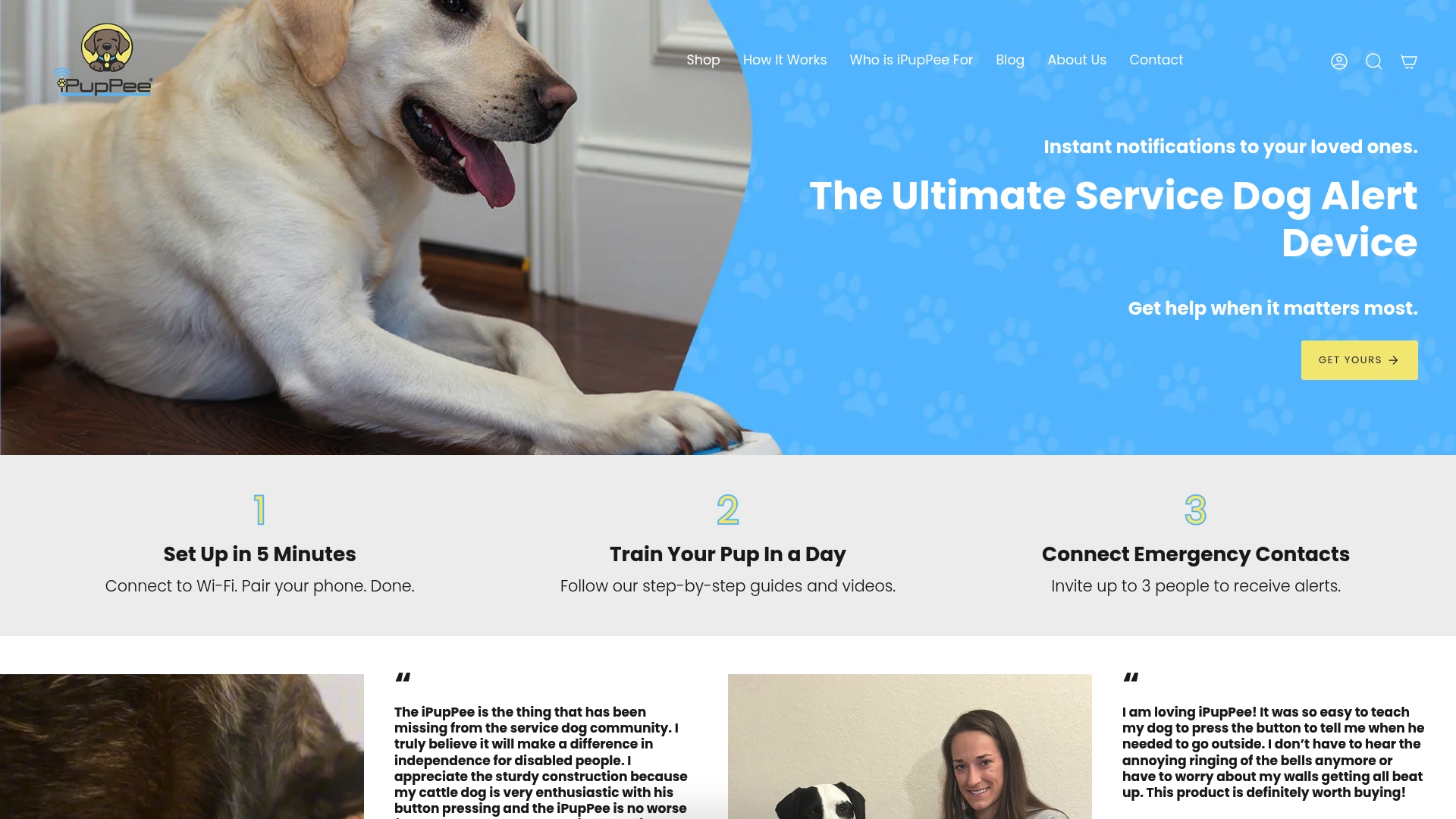
With iPupPee, you can equip your dog with the ability to alert you instantly with a simple button press, bringing peace of mind to pet owners who may be worried about their dogs’ safety. Whether you have a service dog, a new puppy, or a rescue dog, our device is designed for every dog’s unique needs and for owners who care about their safety and independence.
Don’t wait until it’s too late! Transform how you and your dog interact and enhance their safety today. Visit https://ipuppee.com to learn more about our groundbreaking alert device and how it can change your life—and your dog’s life—for the better!

